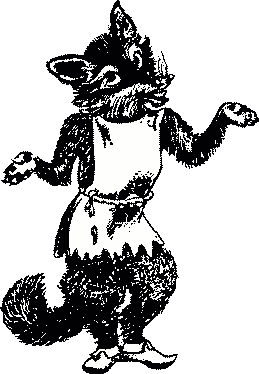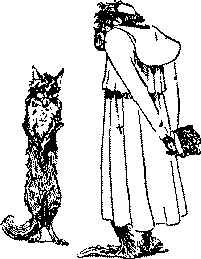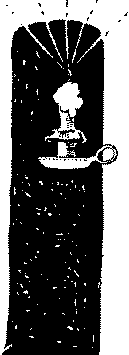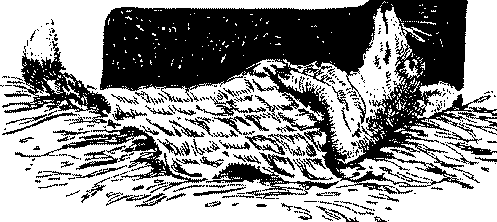
Reynard, illustrated by Laura Bannon, as he appeared in Andre Norton's 'Rogue Reynard' (1947).
|
| Not | alone, | the | supporting | characters | are |
| also | depicted | as | evil, | vain, | stupid, | or |
| merely | uncaring. | | There | are | large | doses | of |
| violence, | death, | deceit, | treachery | and |
| rape. | | The | tale's | morals, | "cleverness | and |
| deceit | will | always | triumph," | are | of | dubious |
value.
Reynard the Fox - His Tale
| R | eynard, | formerly | a | high | ranking | member | of |
| the | King's | court, | has | hit | upon | hard | times. |
| His | many | enemies | and | victims | try | to | incite |
| the | wrath | of | the | King | via | charges | against |
| the | fox. | | This | villainous | vulpine's | enemies |
| include | the | powerful | Isegrim | (wolf), | Tybalt |
| (cat) | and | Bruin | (bear). | | On | the | side | of | the |
| fox | are | Greybeard | (badger), | Dame | Ruckenaw |
| (monkey) | and | Ermelyne | (Reynard's | wife). |
| Trying | to | sort | matters | out | are | King | Noble |
(lion) and his Queen (lioness).
| His | enemies | have | strength | and | numbers; | but |
| Reynard | has | his | wits | and | his | lies. | | The | fox |
| manages | to | sidestep | one | charge | after |
| another, | always | fooling | the | King | and | Queen |
| with | his | tales. | | Finally | Isegrim | initiates |
| a | physical | battle | that | will | settle | the |
disputes once and for all.
|
|



